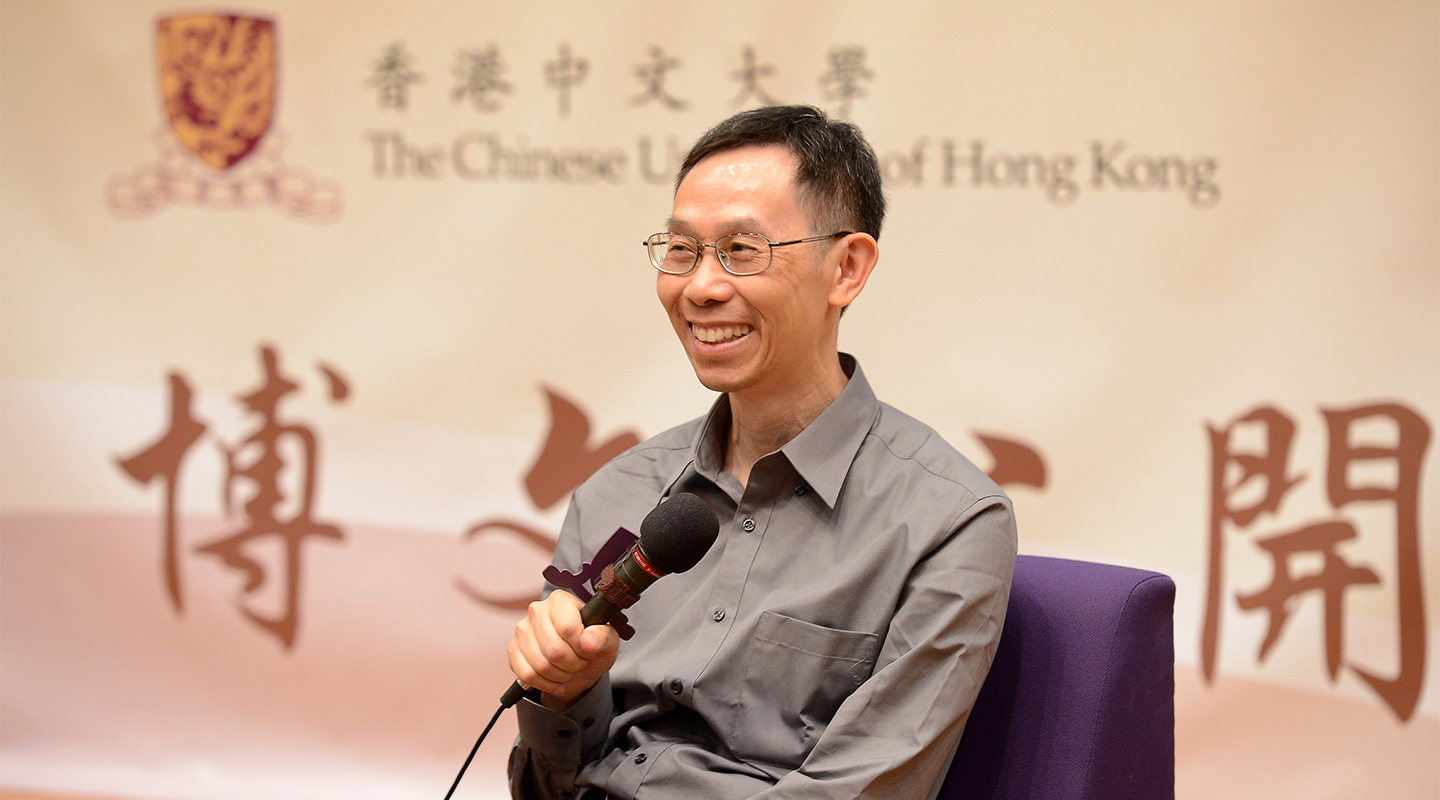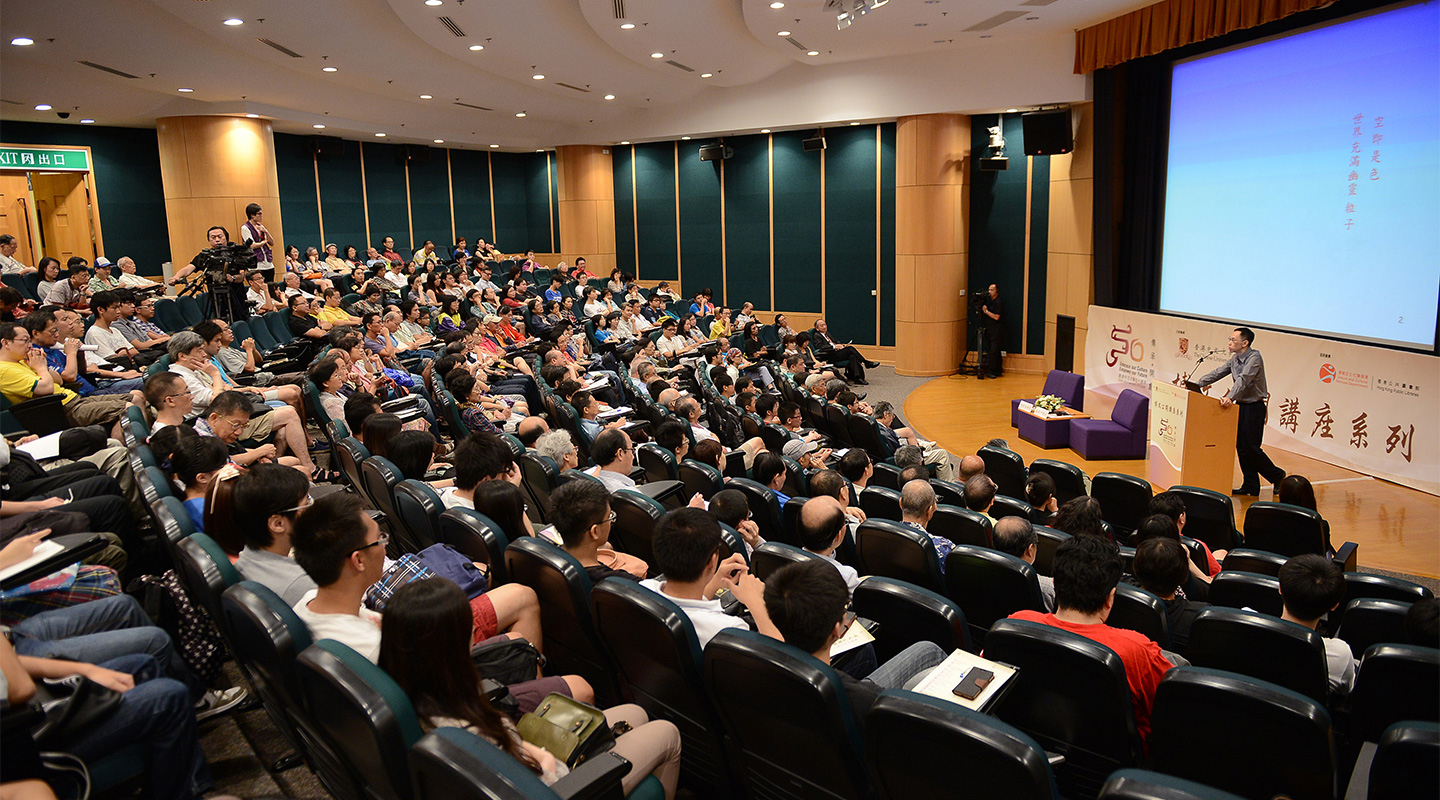Dear readers, With the launch of e-newsletter CUHK in Focus, CUHKUPDates has retired and this site will no longer be updated. To stay abreast of the University’s latest news, please go to https://focus.cuhk.edu.hk. Thank you.
A Crowded Void: Tracing the ghost particles back to our origin

'There is substance in the void. Countless ghost particles impinge on our world. As I speak, over a trillion ghost particles pass through each single seat in this lecture hall every second. They pass through us as if we don't exist,' thus began Prof. Chu Ming-chung of the Physics Department in the CUHK 50th Anniversary Public Lecture entitled 'Ghost Particles and the Evolution of the Universe' on 24 August.
Professor Chu leads the Hong Kong team of the international Daya Bay Collaboration in studying neutrinos (one kind of ghost particles), in the hope of finding answers to some of the most fundamental questions related to the origin of the universe. 'According to the Big Bang Theory, the universe was all energy 13.8 billions years ago. With the expansion of the universe, energy slowly became what is known as matter today. But a big question remains. The Big Bang should have produced the same amount of matter and antimatter. But what we can observe today is mostly matter and very little antimatter. Where have all the antimatter gone? It poses a cosmological and particle physics puzzle.' Scientists infer that in the early phases of the universe, matter exceeded antimatter by a 100 millionth part. This minuscule asymmetry has produced stars, the galaxies, life and us. What is not known is why there is this asymmetry of a 100 millionth part.

Due to the existence of large numbers of neutrinos and their renowned taste for breaking symmetries, understanding neutrinos may hold the key to the mystery of the origin of matter-antimatter asymmetry. The three types of neutrinos mix and change into each other when they travel through space (oscillations). The frequency of neutrino oscillation is directly related to the neutrino 'mass splitting', and 'mixing angle' represents the amplitude of the oscillation. Observing and measuring the 'mass splitting' and 'mixing angle' would help to elucidate the nature of neutrinos.
The research group at Daya Bay discovered a new mode of neutrino oscillation last year, which was selected as one of the 'Top Ten Scientific Breakthroughs' of the year by Science. Building on that success, the group announced on 22 August their latest findings on the relationship between neutrino oscillations and energy changes, the measurement of a 'mass splitting'. They also provided a more precise and refined value for the 'mixing angles' derived in the previous year.
According to Professor Chu, the neutrino is being studied in many countries but taking the next step requires international collaborative effort. 'The Daya Bay experiment can only measure the oscillations of anti-neutrinos. Researchers in the US, Europe and Japan are planning the next phase of experimentation: to produce high energy anti-neutrinos as well as high energy neutrinos with accelerators. Observing how these neutrinos and anti-neutrinos vary in their oscillations over long distances give us data that might explain the 100 millionth part asymmetry.'
For the video of the 'Ghost Particles and the Evolution of the Universe', please visit here.
This article was originally published on CUHK Homepage in Sep 2013.